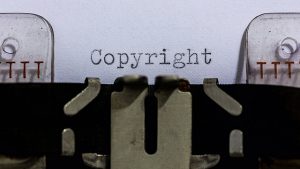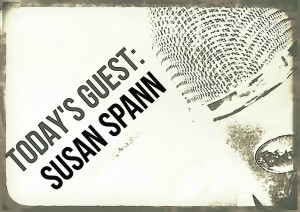Posts by Susan Spann
Flickr Creative Commons: Juliana Coutinho
It’s almost impossible to overstate the utility of foils in fiction.
Technically speaking, a foil is either a character that contrasts with another character or (less commonly) a subplot that contrasts with the primary plot.
When crafting a story, careful use of foils allows a writer to highlight certain qualities in a protagonist (or secondary characters) through action rather than explanation. The differences between the primary character and his or her foil can be physical, but far more often they relate to characteristics like behavior and worldview.
An effective foil can accomplish several important tasks within a narrative, like highlighting positive characteristics of a protagonist or mirroring the reaction the author wants the audience to feel. Since foils usually fill another (often primary) structural role as well, it’s helpful to identify and craft them from the beginning of the story-building process, to ensure they fit seamlessly into the narrative. A well-crafted foil rarely calls attention to himself or herself as such—although they’re also fairly easy to identify if you take a step back and analyze a story.
Foils make the story stronger by allowing the author to draw out important characteristics through action, rather than narrative exposition. For example:
Foils don’t have to highlight only positive characteristics, either:
When foils have too many negative characteristics (or even too many positive ones) they begin to look like caricatures. Fortunately, it’s possible—and often advisable—to create multiple foils within the same narrative, each of whom fills a slightly different role.
All well and good, but how do these ideas translate to a realistic foil on the page? Here are some tips I use when creating mine:
Read MoreFlickr Creative Commons: Sarah Reid
In 2018, I moved to Japan to spend a year climbing mountains and writing both my next mystery novel and a nonfiction book about fighting cancer, facing fear, and breaking free from my old “safe” life to live my dreams. When I planned the adventure, it seemed entirely reasonable to climb 100 Japanese mountains and write two books in a little over 18 calendar months. (Spoiler alert: this was the antithesis of “reasonable.”)
As reality closed in and the months flew by, I realized I was going to need to up my writing game to deliver 160,000 edited, polished words (100,000 in the nonfiction, and 60,000 in my latest mystery) on that timeline. Travel and mountain climbing chewed up more of my time and energy than any full-time job I’ve ever worked, and I had to seek out new, creative ways to find the writing time I needed.
One year and two manuscripts later, here my top tips to squeeze more writing time from a busy day:
Use the Ride. Most of us work a day job as well as writing. For many of us, getting to and from that job involves a commute. I don’t advise writing and driving (via text or otherwise), but if you ride a bus or subway (train), or take a carpool, it may be possible to train yourself to write on the ride. I use the “notepad” feature on my mobile phone, and although it made me queasy at first I kept at it, in short bursts, and over time I learned to make it work. I still make quite a few mistakes on the tiny keyboard, but as long as I can understand it well enough to edit it later, the progress counts.
Mobile Writing Devices (including the phone) are a Busy Writer’s Friends. A decade ago, a writer friend introduced me to the AlphaSmart Neo, a battery-powered word processor with no Internet connection (read: no distractions) that weighs less than a pound. It has a full-sized QWERTY keyboard but its tiny, rectangular screen has room for (at maximum) four lines of text. While I can use it for editing (though it’s inconvenient) it shines as a first-draft workhorse. The tiny screen prevents me from second-guessing myself, and the portability means I can write almost anywhere. Between the Neo and my mobile phone, I’ve added to manuscripts not only in usual places like parks and coffee ships but also while standing in queue at the bank and sitting on mountaintops across Japan.
A Little Plus a Little is (Eventually) a Lot. For many years, I told myself I couldn’t write if I didn’t have a significant block of time. It felt too difficult to get my head back into the work, and I believed I couldn’t focus in short bursts. Unfortunately, that meant I often went several days between writing sessions. This year, with time at a premium, I went back to the way I wrote my very first novel (when my son was young and I still worked full time as well): in 10-15 minute increments. Even a little daily progress is better than none at all, and over time those short bursts of progress really […]
Read MoreFlickr Creative Commons: Noirathsi’s Eye
The Digital Millennium Copyright Act (“DMCA”) is a U.S. law designed to protect content creators (and Internet Service Providers), and to “maintain a balance between the rights of authors and the larger public interest.”
I could write a book (and people have) describing the DMCA in detail, but the part of the law most relevant to authors – and the topic of today’s post – is the DMCA Takedown Notice.
(Advance apologies for the length of this post, but it takes a little space to describe the process in a useful way.)
Under the DMCA, website hosts and ISPs must promptly investigate and resolve copyright infringement claims, provided the claims are presented in a DMCA-compliant notice (normally called a “DMCA Takedown Notice”). The legal requirements for this notice are established in 17 U.S. Code Section 512 (c)(3). In practical English:
To put an ISP on notice of copyright-infringing material on a hosted website, the person claiming infringement (or his/her representative) must send the ISP a written notice (many ISPs accept these notices in electronic format, and many websites post a DMCA submission form) containing the following information:
Before you send a DMCA notice to a website or ISP you should:
Be aware: a DMCA […]
Read MorePhoto by Susan Spann
Happy Holidays!
‘Tis the season . . . to stay off the copyright “naughty list” . . . so here are some tips for avoiding copyright infringement—not only through the holidays, but all throughout the year:
SONGS (AND LYRICS) ARE PROTECTED BY COPYRIGHT
During the holidays, it’s tempting to blog or post the lyrics to favorite carols or celebratory songs—not only on your website, but on Facebook and other social media sites as well. Unfortunately, reproducing lyrics, or poems, in their entirety often violates U.S. copyright law, because lyrics and poems are protected by copyright until they enter the public domain at the expiration of the copyright term.
Posting an excerpt is often permitted under the “fair use” exception to copyright law. However, despite what you often hear online, there is no absolute “fair amount to use.” Popular myths like “two [or five, or six] lines is always okay” are just that: myths. In reality, there is no “bright line” test for copyright infringement. The actual legal test involves the evaluation of four different factors based on the specific “facts and circumstances” of the use.
If you want to share a favorite song or poem, you’re better off quoting the title, or a line or two and then sharing a link to an authorized website that reproduces the work with permission from the copyright holder, or to a video showing an authorized performance of the work.
RECIPES ARE NOT PROTECTED BY COPYRIGHT…EXCEPT WHEN THEY ARE.
Copyright law protects creative expression, but does not protect “functionality” or “facts.” Ingredient lists and basic, functional steps to combine the ingredients in a way that creates a specific type of food is generally considered a functional process, for which copyright is thin (and sometimes, nonexistent). Generally speaking, that means it’s OK to share a recipe.
In fact, U.S. courts have ruled that recipe ingredient lists are merely “statements of facts,” which are not copyrightable, and that factual parts of the recipe’s directions (meaning the instructions regarding combination of the ingredients and the manner in which they’re cooked) are not copyrightable either.
However, creative portions of recipes – including the way the instructions are given and any anecdotes, “tips and hints,” and humorous asides are copyrightable. In other words: you generally can’t reproduce a creatively-worded recipe verbatim, especially if you try to claim it as your own. That said, you probably can share a recipe, translated into your own words, as long as you stick to the functional elements and write your own hints, tips, and “bonus material.”
But Please Remember: in recipes, as in life, ethics matter. While it may be “legal” to strip down and reproduce someone else’s recipe without attribution, it’s not very ethical. If you love a recipe someone else created, it’s better to share your experiences making it (with photos!), and also attribute—perhaps even with a link to the source. You could also share the ingredient list and instructions, and link to the source for tips and creative content. If you have no way to offer a link, it’s also nice to mention the name of the person who created the recipe (if you can).
Read MoreFlickr Creative Commons: Amtec Photos
During the early days—correction, decade—of my writing career, before I had either an agent or a publishing deal, I often felt a kind of desperation. When would it finally be my turn? When would I see my work in print?
Would my day ever come?
I wrote, I researched agents and publishers, I pitched and queried, and—like everyone—I received rejections. Rejections upon rejections, until I almost dreaded opening my email for fear of finding another missive that began, “Although I enjoyed your work, I’m afraid I just didn’t love it quite enough to take a chance in this difficult market . . .”
At times I felt tempted to stop researching “fits” and simply adopt a shotgun approach in the hopes of finding any agent or publisher willing to take a chance on my stories.
Fortunately, twenty years of experience as a publishing lawyer stayed my hand. Because, despite the temptation, I knew that having no agent and no publishing deal is better than having a deal I would later regret.
The same is true for you.
Before signing a contract with an agent or publishing house, you must take off the emotional artist hat and evaluate the offer with a non-emotional, business manager’s eye. Consider every aspect of the deal. Does it make business sense? Does it fit your plans and desires for your overall career? For where you are now, and where you hope to go?
Beyond that, take the time to consider these important factors:
Read MoreFear is a liar.
Fear will break your courage, steal your dreams, and tell you that neither you nor your art will ever amount to anything.
Of all the many hurdles that stand between writers (or any other person) and their dreams, fear is often the hardest to fight, and the easiest to surrender to.
For many years, I lived in fear of failure. I refused to write, despite the stories that burned inside me, because I feared that if I tried and failed I would lose the only identity—that of writer—that had defined me as long as I could remember. I went to law school instead of pursuing a career in writing, because I wanted stability I didn’t believe I could get from writing. I continued to practice law even after my first novel, Claws of the Cat, was published in 2013.
I told myself there would always be time to travel more extensively in Japan, to climb the Nihon Hyakumeizan (hundred famous mountains of Japan) and to break through the wall of fear that kept me chained to the security of a lawyer’s life.
Last September, as I faced the upcoming tenth anniversary of my father’s death, I decided to face my fears, take a sabbatical, and spend a year in Japan climbing mountains and writing at least two books (one mystery and one nonfiction book about my attempt to become the oldest American woman to climb the hyakumeizan in a single year). It was time to take a chance and pursue my dreams, despite my many fears.
And then, in November—just as my husband and I prepared to sell our house and move to Japan—I was diagnosed with a highly aggressive form of breast cancer. Fortunately, we caught it at Stage 1 (a side note: ladies, please get regular mammograms—the one I had last November literally saved my life), but instead of heading off to Japan, I found myself facing major surgery (double mastectomy) and four months of intensive, dose-dense chemotherapy.
In my former life, that diagnosis and the fight against cancer would have killed my dreams. I would have let my fears—of the cancer returning, or not having the strength to complete the mountain climbs—derail my plans. I would have retreated into a place of self-pity, excuses, and sorrow, and accepted that climbing mountains (much less writing books about it) was a job for people younger, stronger, and more capable than me.
But that cancer diagnosis taught me a very important lesson: none of us has a guaranteed tomorrow, no matter how safe and secure our lives may seem. Fear will always predict your failure—but if you never try, you can’t succeed.
Read MoreAuthors have many things to watch out for when evaluating a publishing deal, but one of the most common—and most serious—dangers is something the author doesn’t see: the vital clauses and protections that are often missing from “short-form” publishing contracts.
Most authors look at standard publishing contracts (which can easily run from ten to twenty pages, or even longer) with a combination of confusion and concern. For those not versed in legalese (or, more precisely, Publisher-ese) standard contract terms can range from “complex” to “might as well be written in Sanskrit.”
Because of this, some authors see a three-page form and think “hey, this is great!” and “finally, a contract that makes sense!”
Beware…that way be dragons.
Publishing contracts are usually long because they deal with many important legal issues. (Note: anthology contracts are often short, because of the rights involved—this post addresses contracts for novel-length works only.)
“Copyright” is actually a bundle of rights, each of which needs to be addressed in some way in the publishing contract—if only to state that the ones not expressly granted to the publisher stay with the author.
Failure to deal with all of the relevant issues creates ambiguities, and in short-form deals, many of those ambiguities cut in the publisher’s favor.
I’ve recently seen a number of “short-form contracts” that claim to offer authors a “better deal” than “old, traditional, complicated forms.”
Again: beware.
Short form contracts do often include quite a few important clauses, such as grants of rights, royalty statements (and royalty levels), and when the publisher has to send royalty checks. However, short contracts often omit other critical provisions. When problems arise, the author goes to the contract, only to discover the “friendly form” doesn’t address the issue (or, worse, it does, but the publisher prevails).
Here’s a list of just a few important provisions short-form contracts often don’t include:
Read MoreFlickr Creative Commons: Dennis Skley
Copyright law can seem confusing, but authors need to know the basics—especially when (and whether) to register a copyright, and what to do when using a pseudonym. As a publishing lawyer, I work with copyright issues (and authors) all the time, and today, I thought I’d take a closer look at some popular myths about copyright law and how it applies to novels and other creative works.*
Myth #1: You have to register copyright in order to own the copyright in your work.
False. Registration with the U.S. Copyright Office is not a legal requirement for copyright ownership. Copyright attaches to “qualifying works**” automatically at the time of their creation. However, copyright registration is generally required in order to file a lawsuit against infringers, and to claim certain benefits under the U.S Copyright Act, so authors should register copyright within three months of a work’s initial publication.
(**Short stories, novellas, novels, anthologies, poetry, and similar fiction and non-fiction works all generally qualify for copyright protection.)
Myth #2: Authors benefit from copyright registration.
True! Copyright registration gives copyright holders significant benefits under U.S. law. Among them:
Many of these benefits are available only if a work is registered in a timely manner, meaning within three months of initial publication. However, some benefits (such as the right to sue to stop infringement) are available regardless of the timing of registration.
Myth #3: A book is not “published” for copyright purposes if you give it away for free.
False. Under the Copyright Act, “publication” means “the distribution of copies . . . of a work to the public by sale or other transfer of ownership, or by rental, lease, or lending,” or “offering to distribute copies of the work to a group “for purposes of further distribution, public performance, or public display.” (17 U.S.C. Section 101)
The Copyright Act does not require that the author make any money (or profits) on sales before a work is considered “published.”
Also, the Copyright Act does not distinguish between self-published works and those published by a third-party publishing house. Published is published, regardless of the method the author chooses.
Myth #4: If you don’t register the copyright before publication, you can never register at all.
Read More
In recent months, I’ve seen the resurgence of several terrible “pay to play” publishing contracts that authors should learn to recognize and avoid.
My law school contracts professor used to warn us, regularly, that “a person can make as good a deal, or AS BAD A DEAL, as he or she is able.”
Accept one of these particular contracts, and you’ll be making a very bad deal indeed:
BAD CONTRACT #1: “WE PUBLISH, YOU PAY”
In this type of contract, the author pays the publisher for some or all of the editing, publishing, and/or distribution costs to produce the book. Often, the costs are not listed up front, leaving the author on the hook for undisclosed (and generally, enormous) sums. Where costs are listed, they normally exceed the amount the author would pay to hire professional developmental and copy editors, cover designers, formatters, and printers in order to produce and publish the work herself.
In a traditional publishing deal the publisher, not the author, pays the publishing and distribution costs.
Read MoreContests can be a great way for authors to get professional critiques, or get published, but contests also offer scammers and vanity presses a chance to take advantage of unwary writers.
So … beware!
Before you enter a writing-related contest, consider the following:
Always read the fine print.
In this case, that means the contest terms – no matter how long (and boring) they are. In most cases, entering a contest means you agree to the terms as written – whether you actually read them or not – and those terms are a legally binding contract. Read the terms, and do not enter if you see anything that you consider unacceptable or inappropriate.
Beware of copyright grabs.
Unscrupulous contests try to take ownership of entrants’ copyrights via copyright grabs (or “assignments of rights”) in the entry terms. Don’t enter contests that require you to assign your copyright to the contest sponsors (even for a limited term). The copyright should always remain yours and yours alone.
“Winning” should not cost you money.
Some contests require “winners” to purchase something—most commonly, copies of an anthology or the winner’s published book. Generally, this is a sign of a scam, or at least a contest designed to take advantage of author-entrants. Winning should never, ever cost you money.
If the prize is a contract, ask to see it . . .
…Or at least make sure that the terms are reasonably negotiable. Don’t agree to contracts sight-unseen, in a contest or otherwise.
Consider entry fees carefully.
Contests should not be money-making endeavors for the organizers, though sponsors do have a right to cover costs. Slightly higher fees are reasonable when the contest includes a personalized critique, a copy of an anthology composed of winning entries, or something of similar value. Consider whether or not you feel the contest is worth the price of entry.
Evaluate the contest sponsor.
Read MoreMany authors spend years (if not decades) seeking a traditional publishing deal. Unfortunately, when the offer comes, it isn’t always a good one—and knowing when to walk away (and having the strength to do it, despite the steepness of the road) is one of the most important business skills an author can develop.
While no one can, or should, tell you when to refuse a contract, let’s look at a few situations when wise authors should consider walking away from a publishing deal:
1. When the publisher is a vanity press, a scam, or taking advantage of authors.
Legitimate traditional publishers never ask the author to pay for anything out-of-pocket (and should pay royalties based on gross receipts or sales, without deducting publishing costs or expenses before calculating the author’s share). If the publisher asks the author to pay expenses or purchase “mandatory copies” of the work, bullies the author during negotiations (it happens!), or does anything else that suggests the publisher or the deal is not legitimate, the author should refuse the deal.
Investigate publishers carefully before submitting your work or signing a deal. If the publisher’s reputation isn’t squeaky-clean, or if anything seems “off,” don’t be afraid to walk away.
2. When the publisher won’t offer industry-standard terms or negotiate a reasonable contract.
Sometimes, even legitimate publishers’ contracts don’t meet industry standards for fairness. Most publishers are willing to negotiate, but if the publisher won’t budge on terms you consider vital, it’s better to walk away than to sign a contract you consider unreasonable or unfair.
I strongly recommend that authors obtain professional assistance with contract negotiations. Hire an agent or publishing lawyer who knows the industry to advise you or negotiate on your behalf. That said, each author has the right to determine the business terms (s)he is willing to accept. You have the power to refuse any deal that doesn’t meet your business standards.
3. When the publisher lacks the experience or capacity to publish and distribute the author’s work appropriately.
Read MoreFlickr Creative Commons: Lorenzo Scheda
Anthologies offer writers an excellent platform for shorter works and create opportunities for reader cross-pollination. When managed and published properly, anthologies have many benefits and relatively few drawbacks for authors. However, authors do need to ensure–before submitting or signing a contract–that the anthology publisher is offering industry-standard contract terms and proper legal protection for the contributing authors and their works.
Today, we’ll review a few of the legal traps and pitfalls authors should beware (and avoid) when contributing work to an anthology:
1. Contracts Are Not Optional.
Every anthology should use a professional, written publishing contract (or release) containing industry-standard terms for anthology publication. If the publisher is taking only non-exclusive rights, and not limiting the author’s right to reprint and re-use the work in any way, a simple release will often suffice, but even this should be in writing. (Note: The author should always retain the copyright and subsidiary rights to the work, as well as the right to re-publish in other contexts. Also, the author should never have to pay the publisher any money or be required to purchase copies of the finished anthology.)
Anthology contracts and releases (sometimes titled “Permission to (Re)Print”) are generally shorter than contracts for book-length works, but they still need to address the relevant legal issues. Also, the contract (or release) must be in writing—emails documenting the parties’ “understanding” are not sufficient and often won’t stand up in court.
2. Never Sign Away Copyright to the Work.
Anthology publishers do NOT need, and should not ask for, ownership of copyright in the individual works that make up the anthology.
Anthology publishers need only a limited license to publish the contributed works as part of the anthology – and the contract should expressly limit the publisher’s use of the work to its inclusion in the relevant anthology or collective work.
If the author transfers copyright to the anthology publisher, the author no longer owns the work and cannot use or publish it in other contexts (without permission, which the publisher then has the legal right to withhold at will). Most anthology publishers don’t try to take ownership of the contributors’ works; don’t submit to anthologies that do.
One additional note: some anthology contracts state that the publisher owns the copyright on the anthology as a collective work. This is different from ownership of the individual stories. Anthologies actually involve two separate types of copyrights:
Read MoreTherese here to officially welcome our newest contributor to Writer Unboxed: publishing attorney and author of the Shinobi Mysteries, Susan Spann!
In January, my guest post here at Writer Unboxed took a look at reversions of publishing rights and how to request them. Toward the end, I mentioned the benefits of clauses tying out-of-print status (and author termination rights) to a stated number of royalty-bearing sales. Today, we’re taking a closer look at out-of-print clauses, and how to understand them.
The “out of print” clause is often one of the author’s only chances to terminate a publishing contract without the publisher’s advance agreement (the legal term for this is a “unilateral” termination right).
Good publishing contracts (and self-publishing terms of use) should always give the author at least a couple of unilateral termination rights. Self-published authors should always have the right to terminate at will (subject to payment of any sums owed to the printer or distributor). In fact, out-of-print status shouldn’t appear in self-publishing terms of use at all, because the author-publisher should have the exclusive right to decide when the work is available and when to take it out of print.
In traditional publishing contracts, the author should have (at a minimum!) the right to terminate if the publisher goes out of business, fails to publish the work or pay royalties due within stated periods of time, or fails to sell a stated number of royalty-bearing copies of the work within a stated time. (Many publishers will agree for authors to retain additional termination rights as well, but that’s a topic for another day.)
However, many older publishing contracts don’t tie out-of-print status to royalty-bearing sales. Instead, they tie out-of-print status to “availability” (or, worse, give the publisher the unilateral right to declare the work out of print). Some publishers still offer authors contracts using these older forms, so read the out-of-print language carefully—and negotiate it if necessary—before you sign a publishing deal.
When reviewing out-of-print clauses, look for three critical components:
Read More





















